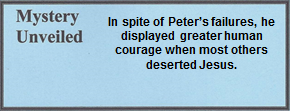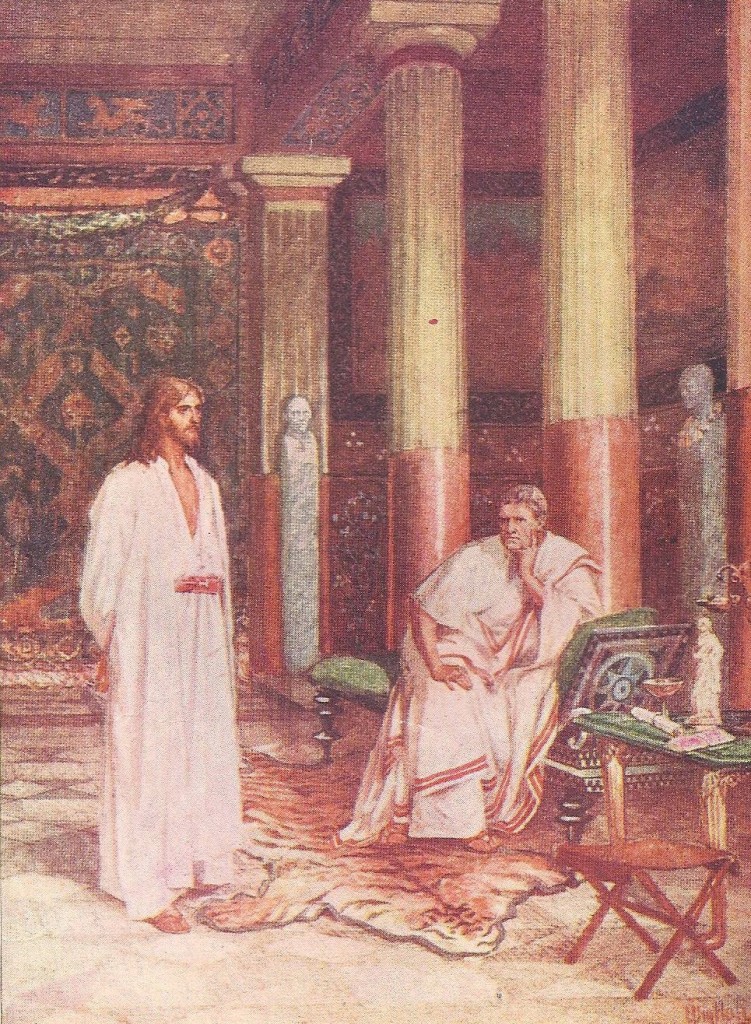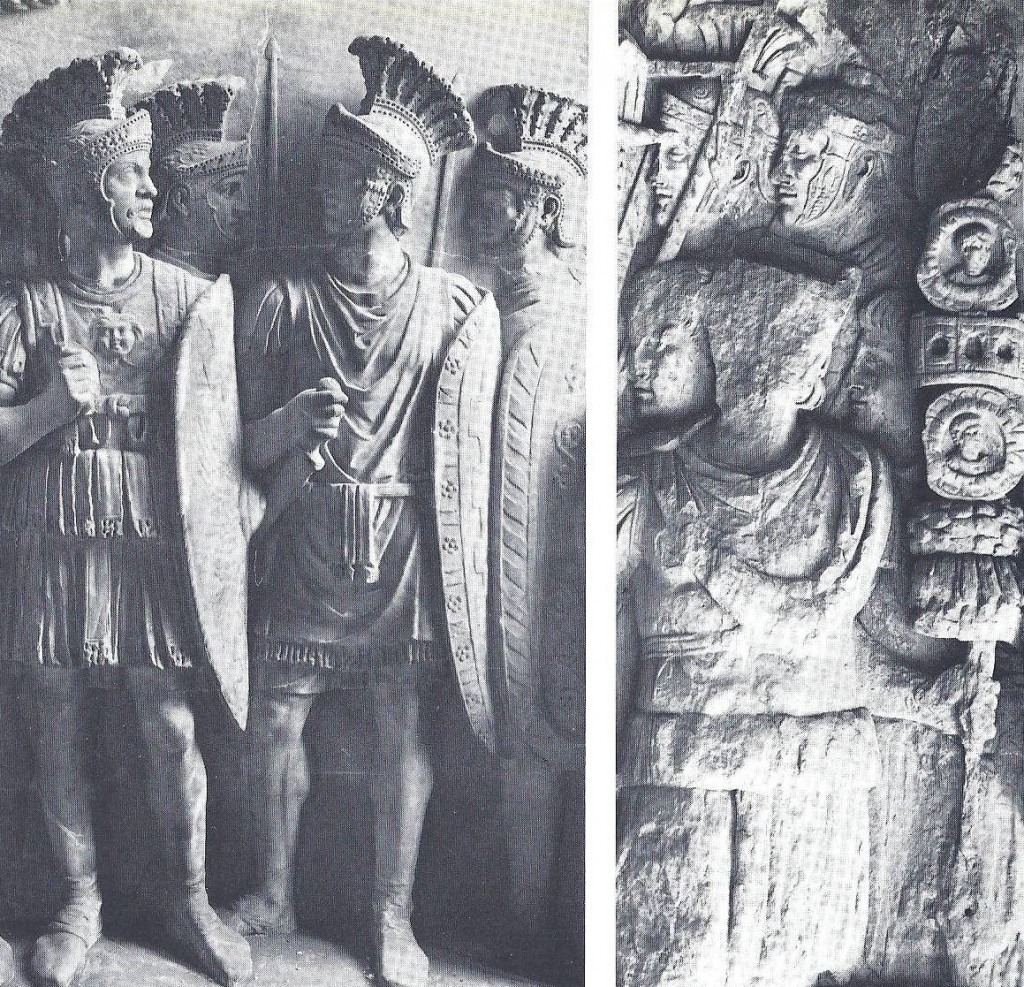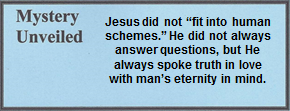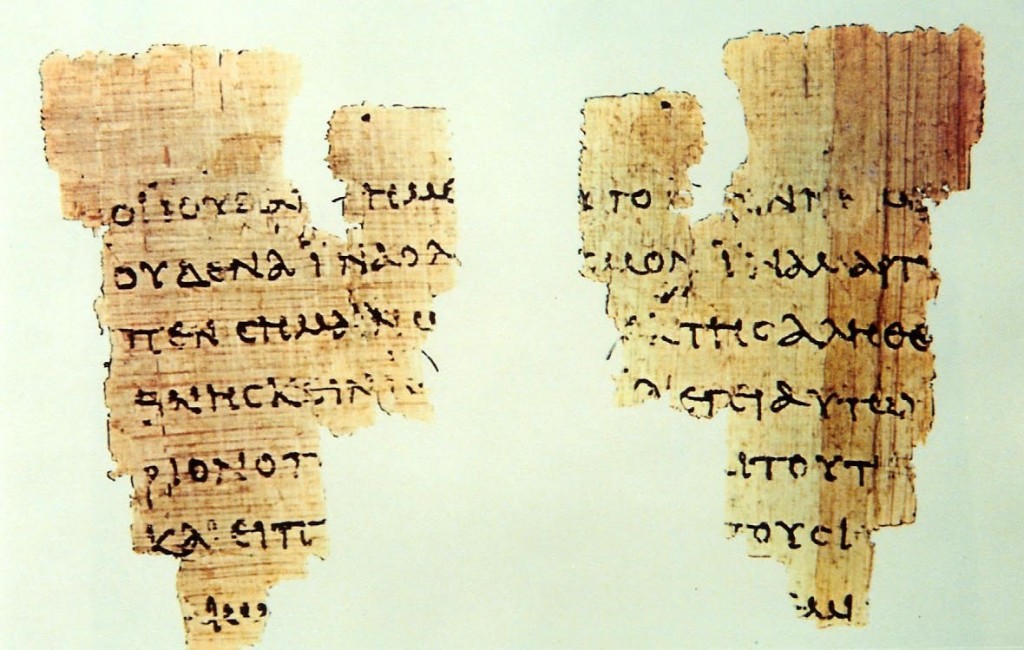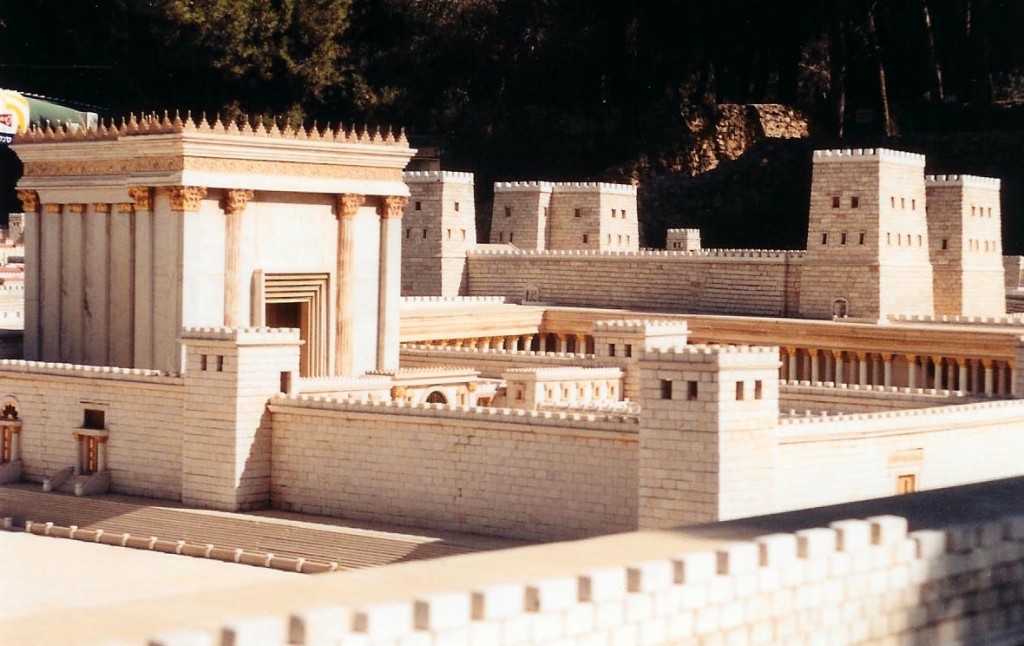15.03.12 Mt. 27:3-5; Acts 1:18b-19; Mt. 27:6-10
JUDAS COMMITS SUICIDE
Mt. 3 Then Judas, His betrayer, seeing that He had been condemned, was full of remorse and returned the 30 pieces of silver to the chief priests and elders. 4 “I have sinned by betraying innocent blood,” he said.
“What’s that to us?” they said. “See to it yourself!”
5 So he threw the silver into the sanctuary and departed. Then he went and hanged himself.
Acts 18b He fell headfirst and burst open in the middle, and all his insides spilled out. 19 This became known to all the residents of Jerusalem, so that in their own language that field is called Hakeldama (that is, Field of Blood).
Mt. 6 The chief priests took the silver and said, “It’s not lawful to put it into the temple treasury, since it is blood money.” 7 So they conferred together and bought the potter’s field with it as a burial place for foreigners. 8 Therefore that field has been called “ this day. 9 Then what was spoken through the prophet Jeremiah was fulfilled. They took the 30 pieces of silver, the price of Him whose price was set by the Israelites, 10 and they gave them for the potter’s field, as the Lord directed me (cf. Zech. 11:12-13; Jer. 19:1-13; 32:6-9).
15.03.12.Q1 How does one explain the obvious disagreement concerning the suicide of Judas as recorded in Matthew 27:5 and Acts 1:18?
Matthew 27:5 records that Judas hanged himself, while in Acts 1:18 he fell forward (headlong) and his bowels spilled upon the ground. Some have attempted to explain that the traitor first hung himself from a tree and when the rope broke, he fell forward on the ground, causing his stomach to open. While this makes common sense to the modern reader, it is highly doubtful. Others have stated that Matthew emphasized the remorse of Judas while Luke, in the book of Acts, emphasized the judgment of God. This may be true, but it fails to satisfactorily answer the question.
The ancients used several methods of execution: stoning, crucifixion, burning, death by lions or gladiators, or impalement upon a sharpened stake which was commonly used by the Assyrians, who were the cruelest and most feared people of antiquity.[1] The method almost never heard of was death by hanging with the use of a rope (a possible exception was Haman in the book of Esther). Of all these, impaling oneself upon an impaling stick could have been the choice of death, resulting from an impulsive decision demanding immediate results, considering the emotional turmoil of Judas. By definition, a cross is an upright stake upon which one could be hung, bound, or impaled.[2] Papias, an early Church father who supported this, said that Judas hung himself upon an impaling stick. If such a horrific death were completed, then Matthew 27:5 would not contradict Acts 1:18. The Code of Hammurabi (1754 B.C.) states that if an upper class woman causes the death of her husband, she shall be impaled upon a stake (see example 15.03.12.B below).[3] The stake of Hammurabi and the Assyrians evolved into the post with a cross beam of the first century. In fact, the word for stake was also used for cross.[4]
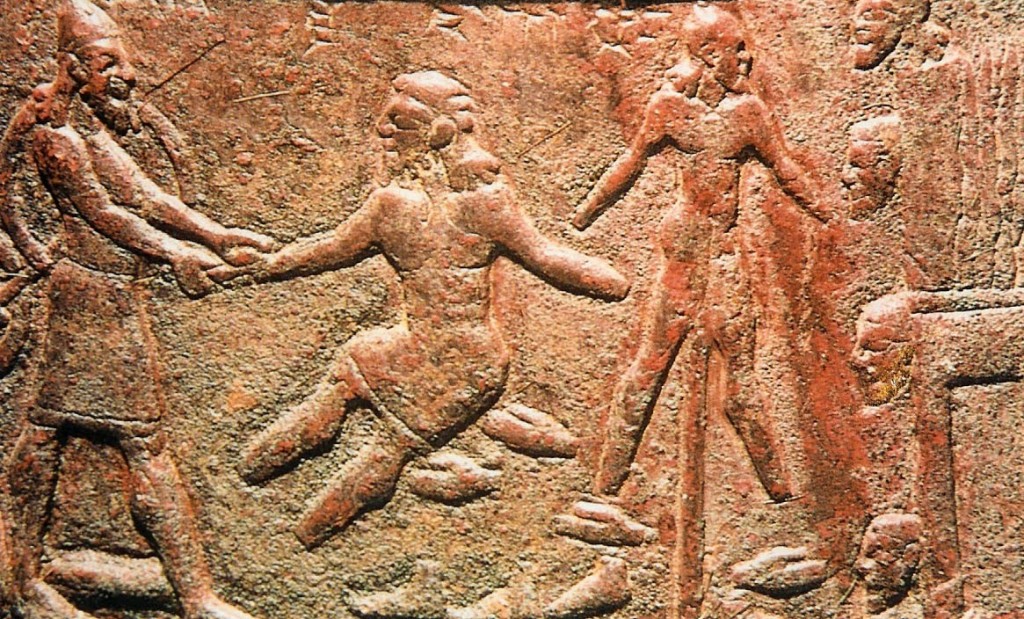
15.03.12.A. RELIEF CARVING OF ASSYRIANS IMPALING ISRAELITES. In 701 B.C., the Assyrians impaled live Israelites on poles during an attack on Lachish, one of forty-six cities conquered by the Assyrian King Sennacherib. The impaling pole is believed to have been the predecessor to the cross. It is also possible that when Judas “hung” himself, he probably impaled himself and, thus, hung on the impaling pole. If so, this would reconcile the two different biblical accounts of his death. Photo courtesy of the Trustees of the British Museum.
The phrase “hung on a tree” is more accurately translated as “impaled on a stick,” or “impaled on a pole.”[5] If Judas impaled himself, then there is no disagreement between the accounts in Matthew and Acts.[6]
Judas had evil in his heart, but still shared the Passover and first communion with Jesus and fellow disciples. His suicide ought to bring incredible awareness to every believer of the importance of resolving conflicts, anger, or resentment before taking part in communion. Failure to do so could bring judgment on one’s self. It brought a curse according to the words of the Apostle Paul, because…
27 Therefore, whoever eats the bread or drinks the cup of the Lord in an unworthy way will be guilty of sin against the body and blood of the Lord. 28 So a man should examine himself; in this way he should eat the bread and drink from the cup. 29 For whoever eats and drinks without recognizing the body, eats and drinks judgment on himself.
1 Corinthians 11:27-29
When Judas realized he was guilty of a horrific crime, he condemned himself in accordance with the Mosaic Law.
22 “If anyone is found guilty of an offense deserving the death penalty and is executed, and you hang his body on a tree, 23 you are not to leave his corpse on the tree overnight but are to bury him that day, for anyone hung on a tree is under God’s curse. You must not defile the land the Lord your God is giving you as an inheritance.
Deuteronomy 21:22-23
Three New Testament authors, Luke, Paul, and the unknown author of 1 Peter, all used the phrase of “hung on a tree” when describing the death of Jesus. Obviously, the word “hung” does not have reference to the use of a rope. In addition to Deuteronomy 21:22-23 above, note these passages:
- Acts 5:30 “The God of our fathers raised up Jesus, whom you had murdered by hanging Him on a tree.”
- Acts 10:39 “We ourselves are witnesses of everything He did in both the Judean country and in Jerusalem, yet they killed Him by hanging Him on a tree.”
- Acts 13:29 “When they had fulfilled all that had been written about Him, they took Him down from the tree and put Him in a tomb.”
- Gal. 3:13 “Christ has redeemed us from the curse of the law by becoming a curse for us, because it is written: Everyone who is hung on a tree is cursed.”
- 1 Peter 2:24 “He Himself bore our sins in His body on the tree, so that, having died to sins, we might live for righteousness.”
The word tree can mean a literal tree, a pole, or a Roman cross, but also had the double meaning of to be cursed by God.[7] If the word “hanging” in Acts 5:30; 10:39; and 13:29 refers to crucifixion of Jesus on a cross and not a conventional rope hanging, why have some scholars insisted that Judas hung himself with the use of a rope? Maybe they envisioned him hanging from a tree in a manner similar to that of captured horse thieves and bank robbers in America’s wild, wild, west who were executed by hanging from tree. That is hardly the case. When the Romans had a shortage of nails, many rebels were hung on a cross with their elbows tied with a rope to the cross beam.[8] If the definition of the word “hanging” had some latitude, then it should not be of restricted use relative to Judas. Interestingly, both Jesus and Judas died carrying the curse of death.
15.03.12.Q2 Could Judas have asked for forgiveness?
Most theologians say “no.” One can only come to our Lord by responding to the call of the Holy Spirit. Furthermore, once his evil deed was done, Judas forgot all the teachings of Jesus concerning love and forgiveness, and focused his attention on his actions and the damned eternity waiting for him. There is a huge difference between his sin and that of Peter’s. Peter denied Jesus; Judas betrayed Him. Saint Augustine had the following comments about the differences between the denier and betrayer:
It is this difference in their sins which separate Judas the betrayer from Peter the denier: not that a penitent is not to be pardoned, for we must not come into collision with that declaration of our Lord … but that therein connected with that sin is so great, that he cannot endure the humiliation of asking for it, even if he should be compelled by a bad conscience both to acknowledge and divulge his sin. For when Judas had said, “I have sinned, in that I have betrayed the innocent blood,” yet it was easier for him in despair to run and hang himself, than in humility to ask for pardon.
Augustine, Our Lord’s Sermon on the Mount[9]
In the first century, rabbis taught that there were three kinds of eternity.
- There was heaven for observant Jews.
- There were those who went to a hell that was not eternal, but terminated in a form of death.
- There was an eternal never-ending death that was reserved for the severest sins, such as betrayal of a friend to the enemy.
Judas betrayed a fellow Jew and thereby caused one of his own to be crucified. For this, he believed that he was about to receive the worst eternal damnation. The thought of his deed and its consequences were so painful, that he could not endure living any longer and thereby, he hastened his arrival into the eternal flames. The seriousness of betrayal was preserved in one of the Dead Sea Scrolls known as the Temple Scroll. A portion of it reads as follows,
If 7 a man informs against his people, and delivers his people up to a foreign nation, and does harm to his people, 8 you shall hang him on the tree [Deut. 21:22-23], and he shall die. On the evidence of two witnesses and on the evidence of three witnesses 9 he shall be put to death, and they shall hang him on the tree. (Blank) And if a man has committed a crim[e] punishable by death, and has defected 10 into the midst of nations, and has cursed his people [and] the children of Israel, you shall hang him also on the tree 11 and he shall die. And their body shall not remain upon the tree all night, but you shall bury them the same day, 12 for those hanged on the tree are accursed to God and men; you shall not defile the land which I 13 give you for an inheritance.
Dead Sea Scroll, Temple 11Q 64:6-13[10]
The realization of this horrific sin must have had an incredible illuminating power to Judas. But the question is, why did he not pray for forgiveness? No doubt, in the passion of the moment, he thought that such an option was no longer available for him, considering the severity of his deed. He was filled with remorse (Mt. 27:3), he confessed his sin (Mt. 27:4), but he failed to ask for forgiveness. No doubt, this is probably due to the cultural context of the day, where it was believed that there was no forgiveness for any Jew who was responsible for the death of another Jew.
The theological question of any possible forgiveness for Judas is beyond the scope of this study, but a brief response is this: Some will say that, by this time he had committed the unpardonable sin and the Spirit of God no longer called him to repent. Others have suggested that, just as other demonically possessed men were delivered from demonic powers, Judas could have been likewise delivered. Still others say he could have waited until Jesus arose and then asked Him for forgiveness; but at that time who would have thought that Jesus was going to return to life? However, in his mind, forgiveness was impossible considering the travesty of his betrayal. Therefore, no options were possible; there was no possible forgiveness. For thirty pieces of silver he not only sold Jesus, but in reality, he sold himself into hell. The prophets predicted his action centuries earlier, yet he freely chose this action. This clearly illustrates that,
- God has complete foreknowledge,
- He is always in control of personal situations and of this world, but
- He does not control individuals. He permits people to be independent free moral agents.
The transforming power of Jesus enabled Simon, a revolutionary Zealot, and Matthew, a Roman tax agent, to live and minister peacefully together. During the years Judas was a disciple he acted and played the part of a true disciple. No doubt, there may have been times when he was very sincere about following Jesus. But somewhere in time, he made a willful decision to become a defector, yet he still acted and spoke like a true disciple. He was the proverbial tare in a wheat field.[11] Jesus experienced firsthand the pain of a trusted friend, who became an apostate, hardened his heart, and stood against God. Judas made his decision, but it is God who determined the consequences. It was his was eternal damnation (Acts 1:25).
15.03.12.Q3 Why did Jesus choose Judas for a disciple?
This question has fueled many debates. Critics have said this is evidence that Jesus made mistakes which were not written in Scripture. Others claim Jesus was unable to build trust and loyalty among His disciples. Still others say Jesus did not have the divine foresight that was normally attributed to Him.
Only Jesus knows the answer, but consider this possibility: It is inconceivable that Jesus would have made Judas a disciple if there had not been some honest and noble enthusiasm in him, and some attachment to Himself. He was probably a man of superior energy and administrative ability which is why he was chosen to be responsible for the funds of the group, rather than Matthew who was a former tax collector and also acquainted with accounting and financial responsibilities. Jesus was very much aware of the future actions of Judas, but elected to choose him regardless, because Jesus knew that His ultimate purpose was to die on the cross for the sins of mankind (Jn. 6:64). To read why Judas was “needed” to betray Jesus, go to 14.01.12.Q1.
“30 pieces of silver.” For fourteen centuries, ever since Moses wrote the Torah, the price of a common slave had been “thirty pieces of silver.” For example, if a slave was accidently killed, there was to be a thirty shekel fine levied upon the person responsible for the death (Ex. 21:32). Thirty silver coins was also a prophecy given by Zechariah (111:12), which stated that the Messiah would be betrayed for that price, implying he was a servant or slave. Those who became aware of Judas and the price of His betrayal did not miss this symbolism.[12]
15.03.12.Q4 How is the discrepancy between Matthew 27:6 and Acts 1:18 explained?
“It’s not lawful.” The apparent discrepancy is that in Matthew’s account, it was not legal for the priests to purchase anything for the temple using “blood money,” so they purchased the potter’s field which was not owned by the temple. However, in Acts 1:18 Luke clearly said that Judas purchased the potter’s field with the reward of iniquity or sin.[13] He wrote to a Gentile audience and indicated the original source of the funds. Matthew however, wrote to a Jewish audience and wanted to make sure his readers understood that the priest actually did something right this time.
“It is blood money.” This confession would haunt the chief priests. It was their confession that they were co-conspirators with the former disciple. Judas no longer wanted the money, nor could they accept it when it was offered back. They had worked so hard and feverishly to have Jesus killed, but once they succeeded, they disassociated themselves from Judas because they realized a great wrong had been committed. Money given to the temple by dishonest donors could not be used for temple service. Therefore, such money was used for public service, not related to the temple. In this case, since Judas was dead, the chief priests purchased a potter’s field in the donor’s name (Judas). In first century thinking, this act was as if the betrayer had personally purchased the field and not the priests.
“Potter’s field.” It was the custom that individual families had family tombs. However, potter’s fields or mass graves were for the poor, homeless, and criminals in Roman society.[14] It was common in Gentile communities that a criminal who brought great shame to a family, was left on the cross to rot and be devoured by wild animals. The Jews would never permit this to happen. They did not use mass graves like the Gentiles, but they did have a “potter’s field” or “non-family” cemetery for the poor, homeless, and criminals. The Jewish people always tried to bury their dead before sunset.[15]
To a reader who takes a literal viewpoint on the term “potter’s field,” he would suspect that a potter’s field might be where clay is acquired for the manufacture of clay pottery, where ovens fired the clay vessels, or where broken pieces of pottery are discarded. But the term “potter’s field” might have been a euphemism for a mass grave since man was created and formed from dust or clay in the ground (Gen. 2:7).
The phrase “For the potter’s field,” can be translated to read “To buy the potter’s field.” Because pottery kilns created an undesirable smoke, they were prohibited within the city. But some have suggested it was known as the potter’s field because of the clay that was removed from the area.
Now for a final thought on the judgment of Jesus by the Sanhedrin: It is interesting that the supreme judicial body went through the formal exercise of a mock trial to eliminate Jesus from their midst. They could have planned a small riot to kill Him, although not at Passover when there was increased Roman security. Yet, judgment would fall upon those who condemned Him. When the Romans destroyed the temple, the entire cast of Sadducees was slaughtered, along with thousands of other Jews. The human slaughter was so huge that there was no physical means to bury them before decomposition began in the semi-arid desert heat. Therefore, thousands of corpses were merely tossed in the Valley of Hinnom that was “purchased” by the Sanhedrin in the name of Judas.
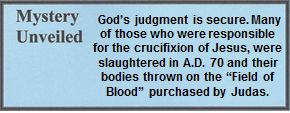
“Blood Field.” It was also known as the “Field of blood,” and in the Hebrew Bible as the “Valley of Slaughter” (Jer. 7:31-32, 19:6, 11-14). Two other names are Gehenna and Topheth,[16] where Ahaz (2 Kg. 16:2-3) and Manasseh (2 Kg. 21:1, 6) sacrificed infant children by burning them alive upon the altar to Molech (2 Kg. 23:10), the god of the Ammonites (1 Kg. 11:7). Therefore, it had a reputation of ultimate death and shame. Tradition says that it was in this field where he hanged himself.
The “field of blood” has traditionally been identified as being south of Mount Zion in the Hinnom Valley. However, archaeologists have discovered some of the most elaborate Herodian tombs, including the tomb of Annas, who was high priest from A.D. 8-15[17] and identified later as such by Josephus in this area.[18] This would have made this valley expensive real estate and not anything that could have been purchased with thirty pieces of silver. The mystery arises because many early Church fathers identified this as the location as where Judas was buried. Influential church leaders, such as Eusebius in A.D. 335, Jerome in A.D. 400, and others who followed, all indicated the same field, where today the Herodian tombs reveal their secrets.[19]
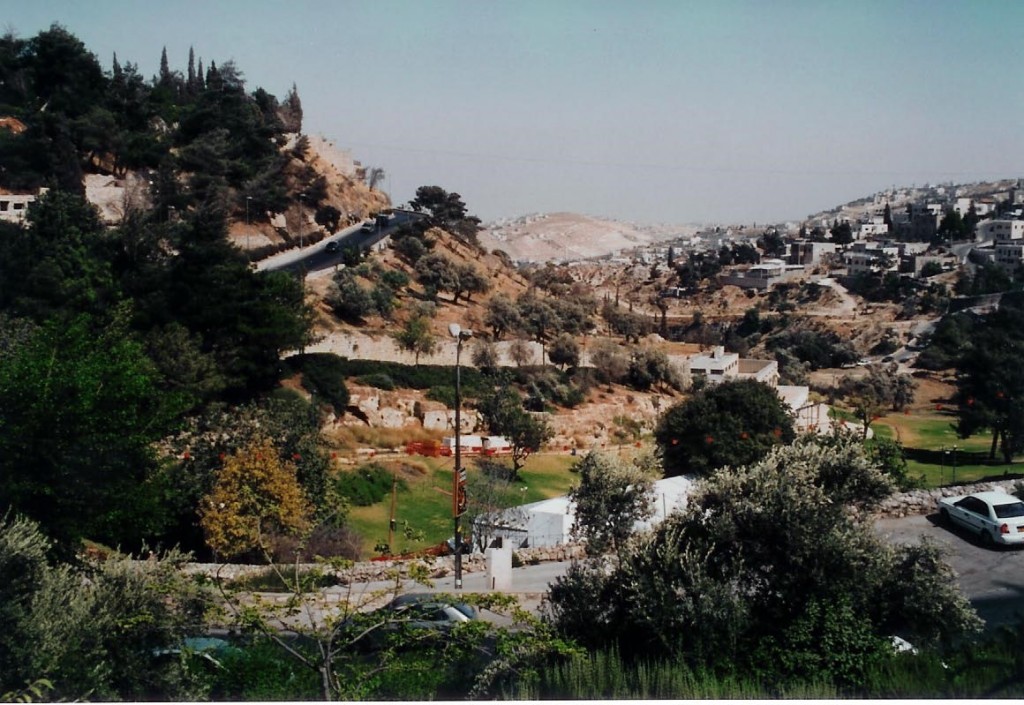
15.03.12.B. THE VALLEY OF HINNOM. The valley as it appears today at the western side of Jerusalem, hides the location of the “field of blood.” At one time this Valley was where Manasseh sacrificed babies to the god Molech (2 Kg. 21:1, 6; Jer. 7:31-32), where they were burned alive. Photograph by the author.
A Lesson in First Century Hermeneutics:
15.03.12.Q5 Did Matthew make a mistake when he attributed the words of Zechariah to Jeremiah?
More specifically, the quotation is this, “What was spoken through the prophet Jeremiah was fulfilled.” In Western thinking, the question answers itself. This phrase would appear to be without difficulties, until the words of Jeremiah (7:31) are researched and it is discovered that these were actually spoken by Zechariah (11:12-13). The closest allusion to any words of Jeremiah refer to a field purchased for seventeen shekels (Jer. 32:6-9, see also 18:2-12; 19:1-13) and not thirty shekels as in Zechariah 11:12 and Matthew 27:9. Did Matthew make a mistake in recording this portion of his gospel? Most certainly, this is problematic to modern Western logic. To understand the statement, it is important to return to the first century to discover how the ancients processed information.[20]
As previously mentioned, there were two schools of biblical interpretation: the Schools of Shammai and Hillel. The latter had established seven rules of interpretation,[21] of which the second one brought together various Old Testament passages based on common words. For example, in the study of messianic prophecies, it would have been normal to bring together words such as shekel, silver, and potter. Hence, there was a blend of two prophecies. Matthew referenced Jeremiah because he was the major prophet even though the bulk of the quotation came from Zechariah. Today, no Bible college student would pass a hermeneutics class with this kind of methodology, but it was common for the students in the School of Hillel, as it was with Matthew and Mark. Likewise, Mark (1:2-3) quoted Malachi (3:1) and Isaiah (40:3), but credited the entire quotation to Isaiah.[22] The gospel writers did not make an error. They followed the principles of scholarship that were in common use in their day.[23]
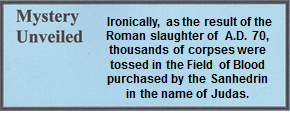
Finally, if the Sanhedrin had the legal authority to execute Jesus, then bringing Him before Pilate would have been unnecessary. The fact that the high court broke multiple rules of Jewish justice is indicative of the corruption of the Hellenistic leadership at this time. It is amazing that Jesus was even brought before Pilate, and not killed quietly by a Zealot or Roman assassin. But He had to die as the prophets foretold.
[1]. Caba. “Crucifixion: History and Practice.” 12-14.
[2]. Taylor, “Cross.” 57.
[3]. The Code of Hammurabi No. 153.
http://courses.cvcc.vccs.edu/history_mcgee/courses/his101/Source%20Documents/wc1d01.htm Retrieved January 28, 2015.
[4]. Robinson. “Crucifixion in the Roman World: The Use of Nails at the Time of Christ.” 34-35 n34.
[5]. New International Version Study Bible footnote on Deut. 21:22; Tzaferis, “Crucifixion – The Archaeological Evidence.” 48.
[6]. Another explanation states that Judas hung himself, but due to the late hour of his suicide, there was no time to bury his body prior to Passover. Therefore, it was simply tossed over the city wall and when it fell upon the rocks of the Hinnom Valley, his abdomen spilled out. It was buried after the Passover ended. The difficulty with this suggestion is that if great efforts were made to bury the body of Jesus who was crucified outside the city walls, why could a hasty burial not have been provided for Judas? This writer believes this argument is interesting but holds little merit. Fruchtenbaum, The Jewish Foundation of the Life of Messiah: Instructor’s Manual. Class 24, page 13.
[7]. Elgvin, “The Messiah Who was Cursed on the Tree.” 34.
[8]. See illustration 16.01.11.B.
[9]. Thomas, The Golden Treasury of Patristic Quotations: From 50 – 750 A.D. 259.
[10]. 64:6-13 = Column 64, lines 6-13.
[11]. It is a point of interest that the Jews considered a tare to be a degenerated wheat plant — precisely the description of Judas.
[12]. See the video “Insights into Selected Biblical Difficulties” 04.04.06.V.
[13]. Green, Interlinear Greek-English New Testament; Berry, Interlinear Literal Translation of the Greek New Testament.
[14]. Cook, “Crucifixion and Burial.” 204.
[15]. Josephus, Wars 4.5.2.
[16]. Topheth means “the place of burning.” This would not have been a garbage dump, but rather, a place where pottery kilns created a constant smoke. First century peasant Jews did not have nor could they afford to burn garbage, as anything combustible but not needed elsewhere was used for cooking fuel.
[17]. Ritmeyer and Ritmeyer, “Akeldama.” 31.
[18]. Josephus, Wars 5.12.2.
[19]. Ritmeyer and Ritmeyer, “Akeldama.” 26.
[20]. See also 05.01.02.X “The Major Prophet Speaks.”
[21]. Some ancient scholars debated on the number of rules. Rabbi Hillel said there were seven, but shortly after him Rabbi Ishmael said there were thirteen. See Appendix 30 “Hermeneutics 101.”
[22]. See 05.02.01.X.
[23]. Kaiser, Davids, Bruce, and Brauch, Hard Sayings of the Bible. 399-400.
